Over here at the Fields of Decay headquarters, we were asked to read a paper about photosynthesis that uses the term ‘Excitation Energy Transfer’ (EET). We love science, but for the love of science, those dense scientific publications are hard to absorb! So, while still not entirely sure what EET is, it feels like a valid descriptor for the end of Week 2’s experience at Sydney University’s symposium: Feminist Queer Anticolonial Propositions for Hacking the Anthropocene.
Now, imagine Leah and Sophia as one molecule and the presenters at the Symposium as another. Borrowing some science from the internet to color our analogy (thank you, internet):
Excitation energy transfer (EET) is a process where the electronic excitation is transferred from a donor to an acceptor. It is widely seen in both natural and in artificial systems, such as light-harvesting in photosynthesis, fluorescence resonance energy transfer spectroscopy and microscopy, and the design of light-emitting molecular devices.
When a molecule absorbs light, it becomes electronically excited, and such excitation may be transferred to another molecule nearby. In photosynthesis, most of the light-absorbing pigments, chlorophylls and carotenoids, are in light-harvesting complexes, which means their role is to absorb light and send the energy to other pigments, eventually to the reaction center for driving chemical reactions.
from: Modeling Electronic Coupling in Excitation Energy Transfer, by Chao-Ping Hsu and Matteo Cavalleri
***
Pigment interactions are far stronger, and energy levels and absorption spectra change. The interactions lead to new excitonic energy levels, shared between the strongly interacting molecules, which can even behave as one big super-molecule.
from: Natural Strategies for Photosynthetic Light Harvesting, by Roberta Croce and Herbert van Amerongen
If information, creativity, and knowledge can be envisioned as forms of light energy, then we were shooting rainbows out of our eyeballs by the end of the conference. Our resonance with the educators, thinkers, creatives, and organizers of Hacking the Anthropocene was so immensely and viscerally felt that we very well may have bonded into a super-molecule of planet-loving goodness.
Week 2, Day 4 (continued):
It all started after we hustled our way to Sydney, picked up our brand new (used) Aura Camera 6000, and dragged ourselves + half our weight in equipment over to Love Letters to Other Worlds, an evening of art, engagement, and collaboration with other worlds. IWCS Dickson St. Community Space was a hive of activity containing photographic, video, and interactive artworks by Kathy High. Waste Matters: You are my Future was largely about microbiomes and fecal transplantation, an “exploration of the power of poo.” It was also about so much more. Both intimate and touching, as well as rockstar dream your own big future, it was funny, moving, and stimulated the senses and imagination. There was a face painting station where one could be adorned with either David Bowie embellishments or a termite masterpiece, and in the center of it all was a Ouija Board mechanism to commune with the termite world called Caution, workers below, created by Perdita Phillips. We made lots of friends, both human and termite. We asked a lot of good questions like: “Who was here?” “What is energy?” and “What is it?” Many of the answers were in the termites’ native language, which we could only pretend to interpret. However the answer to the latter question was “best b jk.” Termites, you best be joking. Then the oracle planchette (which, in this case, was a wine glass) swiftly landed on the termite’s behind. The end. Humor and profundity rolled into one experience.
We can’t leave this evening without saying that the snackage was mighty, especially Lindsay Kelley’s gastronomic experience Bioart Kitchen. With her black elbow-length latex gloves greased with (what looked like) butter, she concocted a cocktail of the most lubricating proportions. It may have looked like shit (chocolate ice cream, coffee, Kahlúa, Benefiber, and corn), but it went down and out real smooth. A thought-provoking and relaxative night was had by all.
Week 2, Day 5:
On Friday we caught the early train (along with hundreds of city commuters) to the University of Sydney to attend the Symposium (hosted by the Sydney Environment Institute): “Hack the Anthropocene!”
And hack we did.
According to Wikipedia, the Anthropocene is “a proposed epoch that begins when human activities started to have a significant global impact on Earth’s geology and ecosystems”.
From the outset, it was clear that this Symposium was going to be all about hacking and hijacking this definition. As Dr. Astrida Neimanis so eloquently proposed, “audaciously exploring alternative possibilities” beyond the binary ‘man’ vs ‘nature’ perspective that places we ‘humans’ centerstage. She instead offered an alter-Anthropocene which considers the perspective of the invisible, the shadow people, the non-human casualties. She proposed that we were gathered in that room out of a desire for a more embodied response to what can be done. Perhaps that is what is needed to understand and attend to the predicament at hand.
We then witnessed an inspiring Opening Keynote by Ellen van Neerven, who read an excerpt from her book, “Heat and Light”, which was transformative and poetic and reeked of solastalgia. It also really underlined the value of fiction as a tool for resistance, storytelling as a tool to enliven empathy and transmit layers of knowledge that exist in lived experience.
The imagery of entanglement from this session (entangled roots, entangled opinions, messy ideas) resonated throughout the day as we dived into a multitude of back-to-back ideas and provocations from a range of academics and artists.
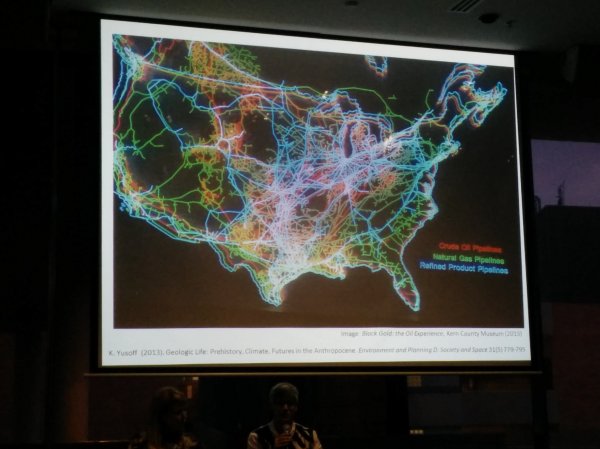
The morning session opened by waxing poetic and delving deep into ECOZOA: A Cellular Response to the Anthropocene, poetry by Helen Moore. How can we respond on a cellular level to the whole ecology of ourselves and the environment?
Vicki Kirby talked about identity – Where do ‘I’ begin and end? What if nature speaks me? What if nature is suicidal? What if culture was really nature all along?
Suzi Hayes proposed Barbie as the high priestess of the Anthropocene – symbolic of white privilege and power, representing “the unfinished story of whiteness” – but also symbolic of a specific orientation. Are nature and culture really separate? Which silences are implied with Barbie at our helm?
The brilliant Pony Express lured us in with their Eco-Sexual Mystique, a video-art piece that got us all hot and horny for nature via intimate and sexy human-snake interaction. “I don’t know if we have the same definition of consent.”
And then Romand Coles gave a talk that blew our minds, resonating intensely with our project’s aims and filling in some gaps for us. How can we refocus the sense foreboding and prophecy of the Anthropocene, the sense that we are faced with an incomprehensible planetary catastrophe? Can we instead see this as some kind of call to action – and if so, how can we adopt new eco-political systems for being?
In thinking about systems and ideologies, this article critiques neoliberalism’s obsession with competition and consumerism, but also suggests that we have failed to build an alternative. “It’s not enough to oppose a broken system. A coherent alternative has to be proposed.” So how do we prepare for change? How do we mobilize new alternatives?
This is where Rom’s talk was so powerful. He talked about his research in grassroots democracy and social movements, and the energetics for change being a combination of the “Episodic Shock Democracy” (for example, a rage-filled uprising); and the “Slow Time Quotidian Practices” (the everyday, small changes built on energetic exchanges that can happen on a cellular level in a conversation that activates mirror neurons; or interspecies connections). He emphasized the “energetic grid” where these alternating currents meet and support each other—where profound practices of attention such as meditation, gardening, and artmaking provide a base to stabilize and draw energy from macro-dynamics and flare-ups such as storms, fires, and fury. Can we cultivate capacities to become enraged and galvanize social change?
Rom talked about “receptive agency” as key to this rethink – if our world is “felt”, then the way we receive and the energy around how we respond is super important. There is an ecological effect when we are moving receptively and co-creating. Practicing attention creates resonance.
Can we energize the “Not-Yet?”
We were lucky enough to grab Rom during the lunch break and talk to him about Fields of Decay, at which point we were sparking with our potential to energize the “not-yet” through this project. Rom’s suggestion that performance can act as a wormhole was particularly evocative for us.
We also discovered that our adoption of the phrase ‘energy enthusiasts’ had a historical resonance. During the American Revolution, the term ‘enthusiasts’ was used to undermine the credibility of groups of women knitting for the war effort. However, these fierce knitters chose to reappropriate the term, owning that they were ‘knitting enthusiasts’ with pride and political rebellion. We like it. Energy Enthusiasts Unite!
Speaking of energy enthusiasts, we were excited to discover a video display of Cat Jones work Somatic Drifts, a sensory interactive work exploring “trans-human and inter-species empathy”. This work was super inspiring as we start to formulate our own sensory, experiential components to Fields of Decay.
All the while, Stephanie Springgay hacked at our senses with her Volatizing Bouquet—an olfactory ether permeating the space and causing our smellometers to register something both foreign and fitting for the themes at hand.
After lunch, more provocations were layered into our already hyper-stimulated minds and senses…
Can we practice purposeful attentiveness and responsiveness to nature? Nature uses lures. Food lures attract the right insects to pollinate flowers. Beauty is used as a tool to elicit responsiveness, which leads to action. “I want you to want me,” says Nature. By paying attention, we can see and understand the lively responsiveness of the world to cultivate a lively relationship. Responsiveness is relational. (Thom van Dooren and Deborah Bird Rose)
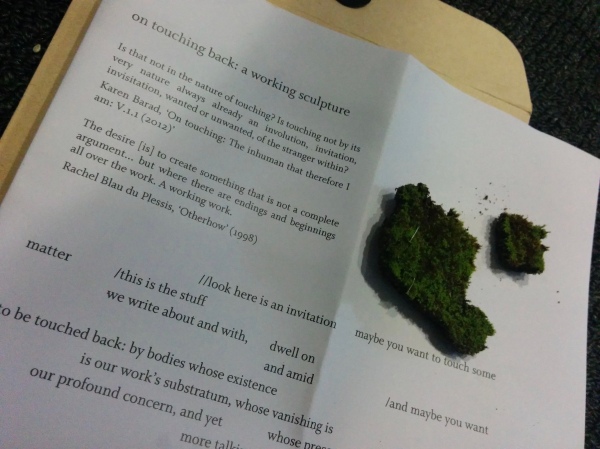
The dingo’s howl is a howl for the Anthropocene. Kept in an enclosure, we see ex-pets behind wire fences, returned for not acting like pets, but acting true to their nature – wild, non-affectionate, independent. What does the howl of a dingo in captivity represent? The horror-movie foreboding of a future we know is approaching? (Fiona Probyn-Rapsey)
Victoria Hunt led us on a physical journey deep into our physical selves. We turned ourselves in the space and in our imaginations into a skeletal view of looking at ourselves from inside and out.
Lindsay Kelley’s extreme baking experience turned to ‘hard tack,’ a survival food that sustained many explorers and soldiers. As we attempted to bite into these solid hard-tack biscuits that were more like rocks, Lindsay talked us through the colonizing history and associated indigestion that the hard-tack represented. Luckily there was tea and juice available to wash it all down.
After the break, we were asked to question our assumptions of Indigenous Australians, looking at their relationship to mining, sustaining their own livelihoods, and anthropogenic expectations these ‘stewards of the earth.’ (Eve Vincent and Timothy Neale)
Majidi Warda gave us a retelling of the Anthropocene as a phone sex romance. “Now the really big bang… what to do?” … “This is irreversible” … “Build more machines and save the dying mother.”
Jennifer Mae Hamilton proposed a rethink of our response to nature … why clear the roads with salt when the snow falls deep? Why not close the roads, rethink, stay home, slow the flow of cars and fossil fuels? What would we do instead if we had to take the time to stay in?
And then we pretended to be ticks. Feel the light, climb up higher and higher, then drop and hope to land in a fleshy warm zone. Then suck. Undine Sellbach and Stephen Loo proposed this playful approach to the cycle of the tick, encouraging us to see it from a different perspective.
The closing keynotes continued to hack our overstimulated minds…
The first keynote was by Professor Cecilia Åsberg, who we met the previous night while communing with the termites. Cici is also Head of The Seed Box in Sweden, which was beaming on our radar, so we already knew she was the real deal. Here’s what we took from her keynote, reconstructed and re-membered:
We have so many stories of toxic impacts upon our world. We did not know better. We still do not know better. We are a culture of the obscene, full of devices, overload, overuse, an obsession with things – but no one wants to take the blame, no one wants to own up. Capitalism, corporatism, consumerism. But each individual has their own part to play, we are all implicated in a thousand tiny anthropocenes. Nature is messy, contaminated, toxic. But was nature ever pure to start with? We are afraid of the chemical, but everything is made up of chemicals. We need to find allies, a new ethic of conviviality, care, sharing and hospitality.
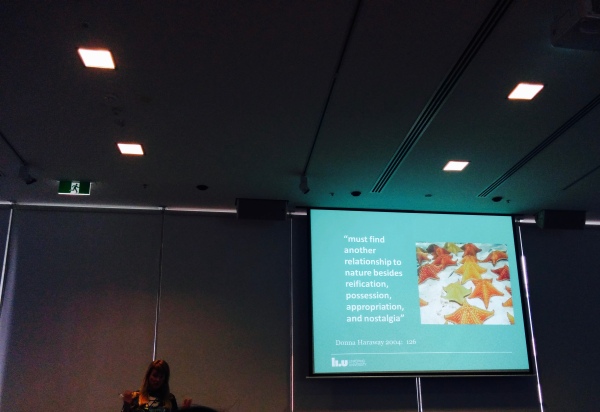
And finally we heard from Dr. Kathryn Yusoff, whose closing provocations brought race to the forefront of the conversation. Again, reconstructed and re-membered from the chaos of our frenzied notes:
Decolonisation is not a metaphor. It has territorial implications. The frontier mentality, and the concept of ‘stewardship’, of man as responsible for the land, reinforces colonialism. Geology maps history through the strata, layers of rock, mineral, fossils. Geology uses death as markers, and the anthropocene amplifies the horror by picking epic moments as golden spikes or markers for future geologists. Dates are set based on nuclear tests, slavery, genocide – so many markers connected with the deaths of indigenous people. The Anthropocene as Environmental Racism. Maybe we need new forms of worlding, and to hasten the end of this one?
Week 2, Day 6:
We went out Friday night and celebrated the end of the Anthropocene (or the end of hacking away at it, anyway). We were lucky to be staying with the wonderful and inspiring Julie Vulcan, so our late night conversations were rich with re-hashing and re-hacking all that we had taken in.
So Saturday morning was a slow start. It was too beautiful not to go out and see Sydney, so we went to Carriageworks to catch some of some of the 20th Biennale of Sydney:
We also got a chance to hug fellow EARTHling Andrew at his digs slinging drinks at Cafe Lounge. We went to bed tired and inspired.
Week 2, Day 7:
Days turn into nights turn into days, and this one brought us up and out early morning to catch some more of the Biennale on Cockatoo Island before taking flight back to Brisbane.
We highly recommend making your way out there if you are in Sydney. The island is covered with evocative and provocative exhibits, so much so that we spontaneously erupted into artistic response. Our top two artworks were choreographer William Forsythe’s pendulum field, Nowhere and Everywhere at the Same Time, and Korakrit Arunanondchai’s Painting with history in a room filled with people with funny names (though notably we were not able to see everything on the island). We responded accordingly:
And then we headed back to Brisbane before “cracking on” through Weeks 3 and 4 (to borrow terminology from Leah’s husband, Mark). We had absorbed so much in a few short days, got really excited, sent out a lot of energy, and reacted with artistic flare. If that process is not Excitation Energy Transfer, then we fold and the plants win. Anyway, we received this message on the way out:
“Good luck on your project! I take the image of you two in lab coats with the aura camera as a promise of indisputable success.”
~ actor, environmental scientist, and Earth empathic being Andrew Lindqvist ~
Nature, we want you. Let’s do it.
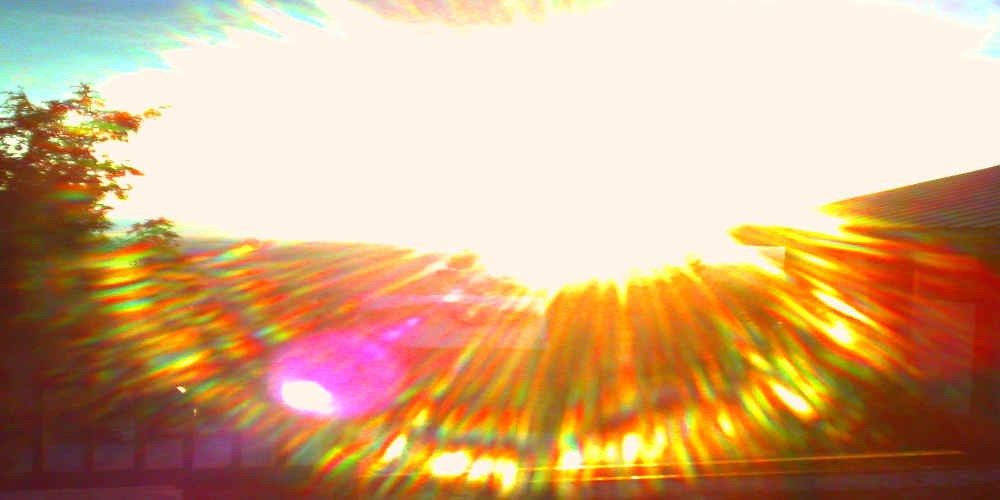

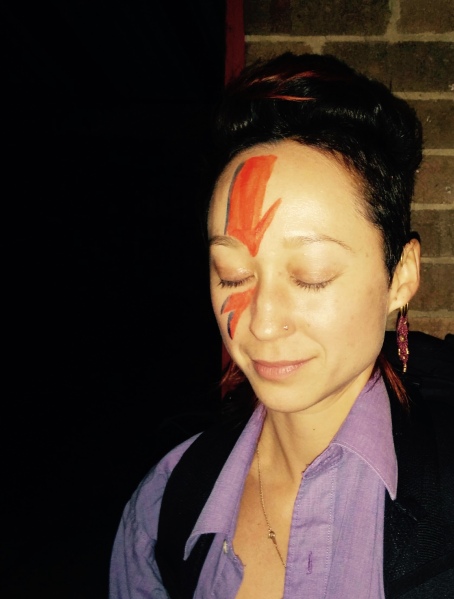

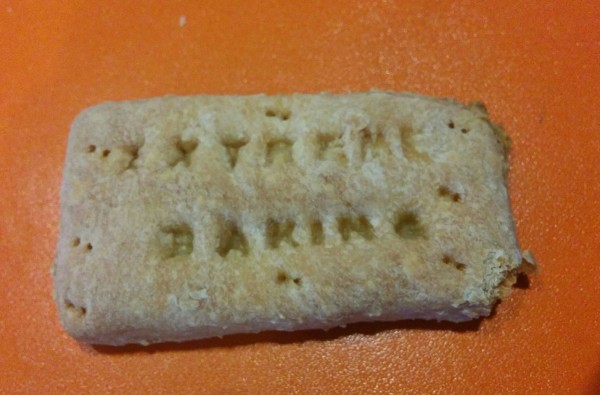
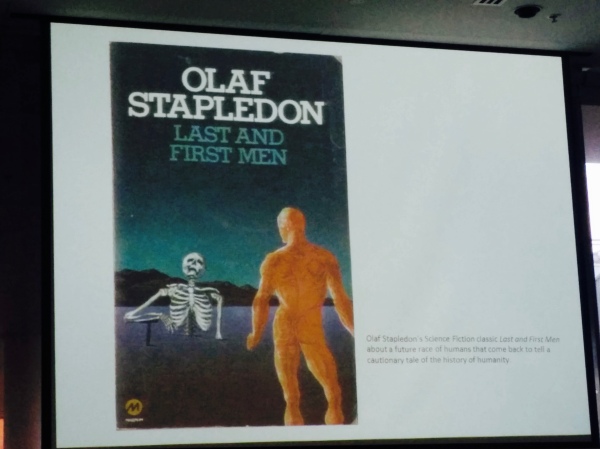
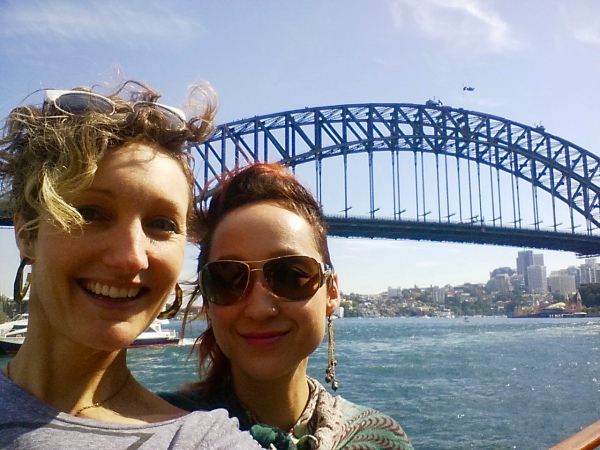
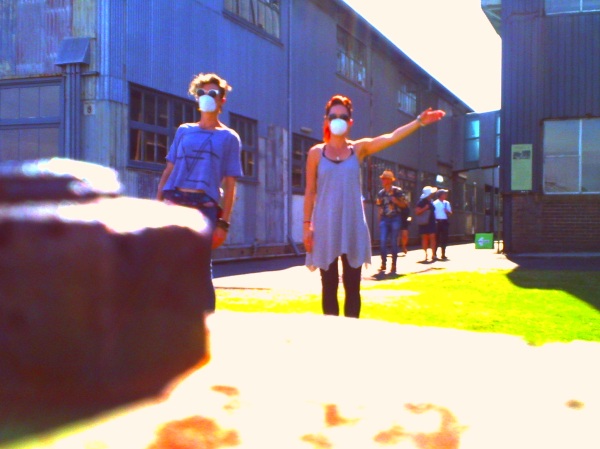
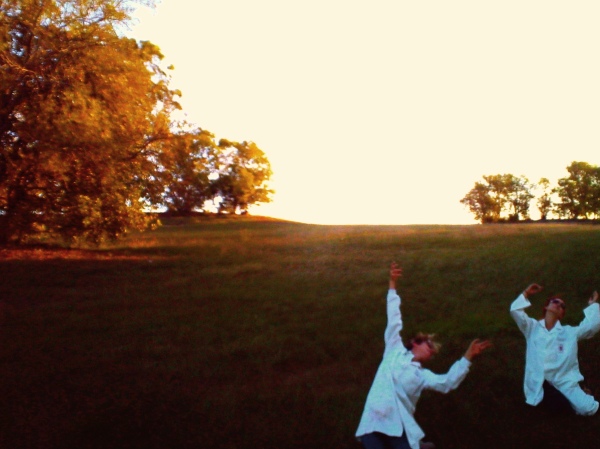
One thought on “Excitation Energy Transfer”